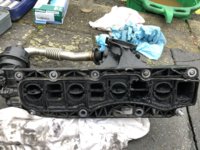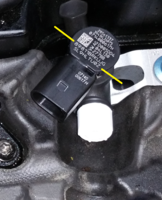Long, story short I’ve had to replace the engine in my T6 102 highline as the old engine killed itself (44k miles, and out of warranty). Anyway, I sourced a new engine a very low mileage CXG model and my mechanic has just fitted it. I made a slight mistake though, as it turns out the new engine is a 150 bhp model and as a result this has resulted in a fault (flashing glow plug light along with an engine management light on the dash and code P008800 fuel rail / system pressure too high from the OBD reader).
My mechanic thinks that the fuel regulator on the new engine is providing the injectors with too high pressure and that the regulator is picking it up as a fault and telling the ecu, hence the warning lights. We’ve come up with 2 solutions which may or may not work. Refit the original regulator off my old engine - hopefully reducing the pressure to the engine, or remap the ECU, my mechanic isn’t sure if this will cure the issue (when they remap the ecu, do they adjust the pressure of fuel, or the duration of fuel at the injectors ?).
I’ve spent a fair amount of money to get to this stage and now I seem to be back to square one, although at least my engine is now running on 4 (rather than 3) cylinders.
Any help, advice or experience would be very much appreciated.
My mechanic thinks that the fuel regulator on the new engine is providing the injectors with too high pressure and that the regulator is picking it up as a fault and telling the ecu, hence the warning lights. We’ve come up with 2 solutions which may or may not work. Refit the original regulator off my old engine - hopefully reducing the pressure to the engine, or remap the ECU, my mechanic isn’t sure if this will cure the issue (when they remap the ecu, do they adjust the pressure of fuel, or the duration of fuel at the injectors ?).
I’ve spent a fair amount of money to get to this stage and now I seem to be back to square one, although at least my engine is now running on 4 (rather than 3) cylinders.
Any help, advice or experience would be very much appreciated.



